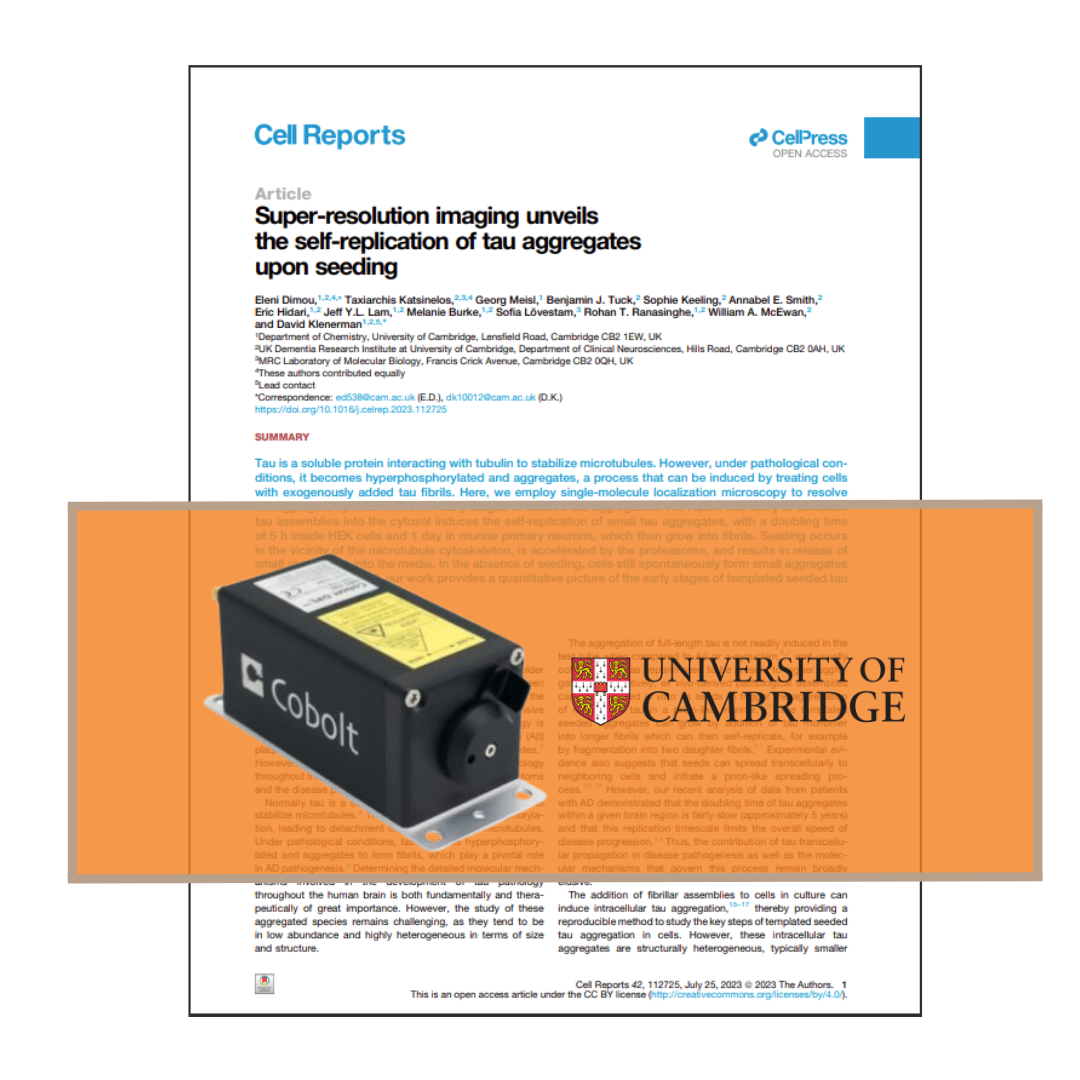Cambridge University’s new findings on Alzheimer’s disease
Super-resolution Imaging Unveils the Self-replication of Tau Aggregates Upon Seeding
Dementia is one of the major causes of disability among older people affecting 50 million people worldwide. Alzheimer’s disease (AD) is the most common form of dementia, characterized by extensive neuronal loss and severe brain shrinkage. As experts have noted, this pathology is driven by the accumulation of extracellular amyloid-beta (Ab) plaques and intracellular hyperphosphorylated tau aggregates. As it turns out, in Alzheimer’s disease, an abnormal form of tau accumulates and begins sticking together in thread-like structures called neurofibrillary tangles. These tangles are not effectively disposed of through the cell’s usual ways of removing “trash.” As a result of this build-up the microtubule superhighway becomes damaged, thus disrupting the normal functions of neurons (Tau protein in Alzheimer’s disease).
Researchers from the University of Cambridge have made significant strides in understanding Alzheimer’s disease by using super-resolution microscopy to observe tau protein aggregates within cells with the help of the Cobolt 06-MLD. The group used the following wavelengths: 405, 488, 561 and 638 nm.
For the first time, scientists are able to visualise how tau aggregates form and replicate. Their study highlights that even without external seeding, cells can spontaneously form small tau aggregates.
Significance of the study:
The research is significant as it clarifies how tau aggregates replicate themselves, which helps advance our knowledge on the mechanisms behind neurodegenerative disease such as Alzheimer’s. Researchers will be able to harness this information for early detection and diagnosis to empower earlier treatment and better patient outcomes for the future.

More resources
Looking for more in-depth information? Visit our Knowledge Bank page for detailed articles and insights on our products and technologies.




